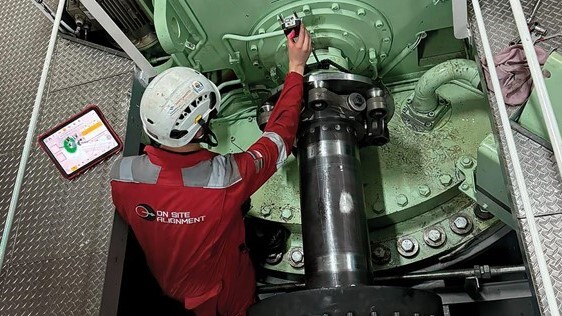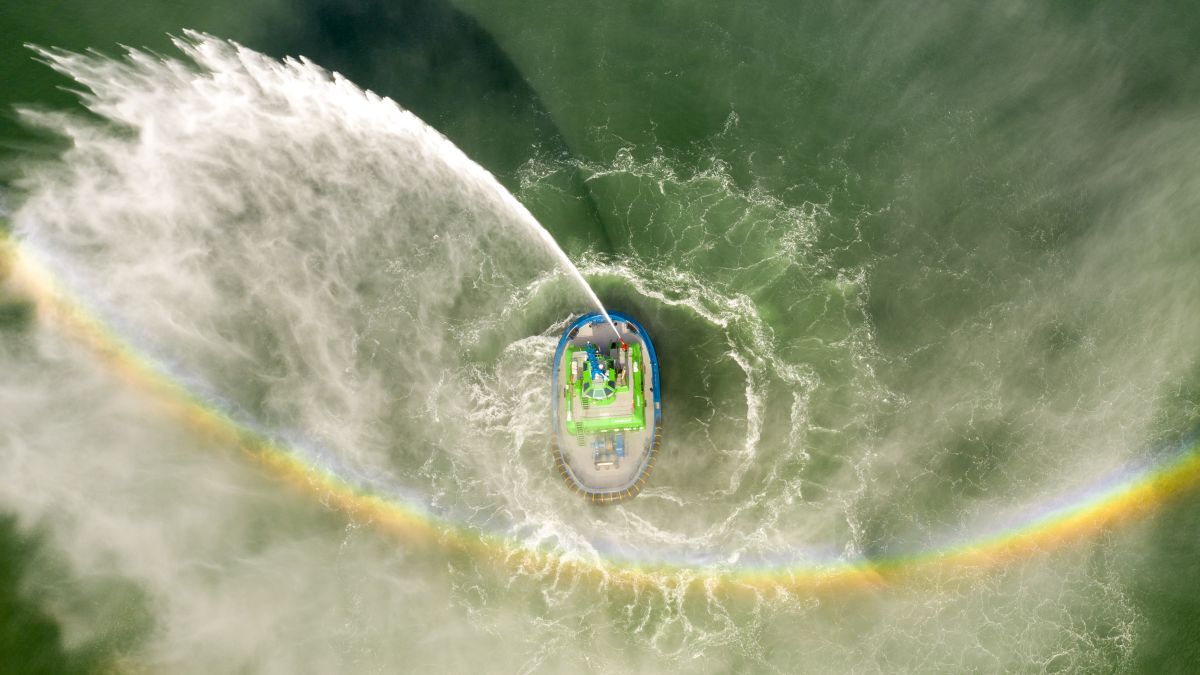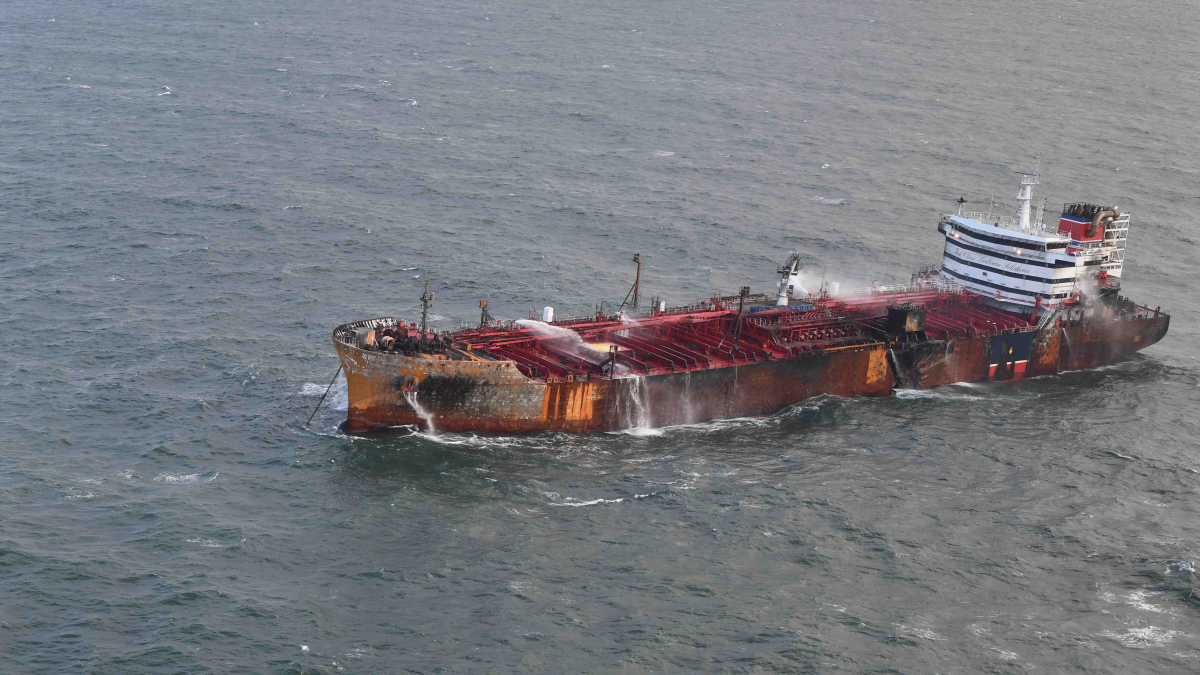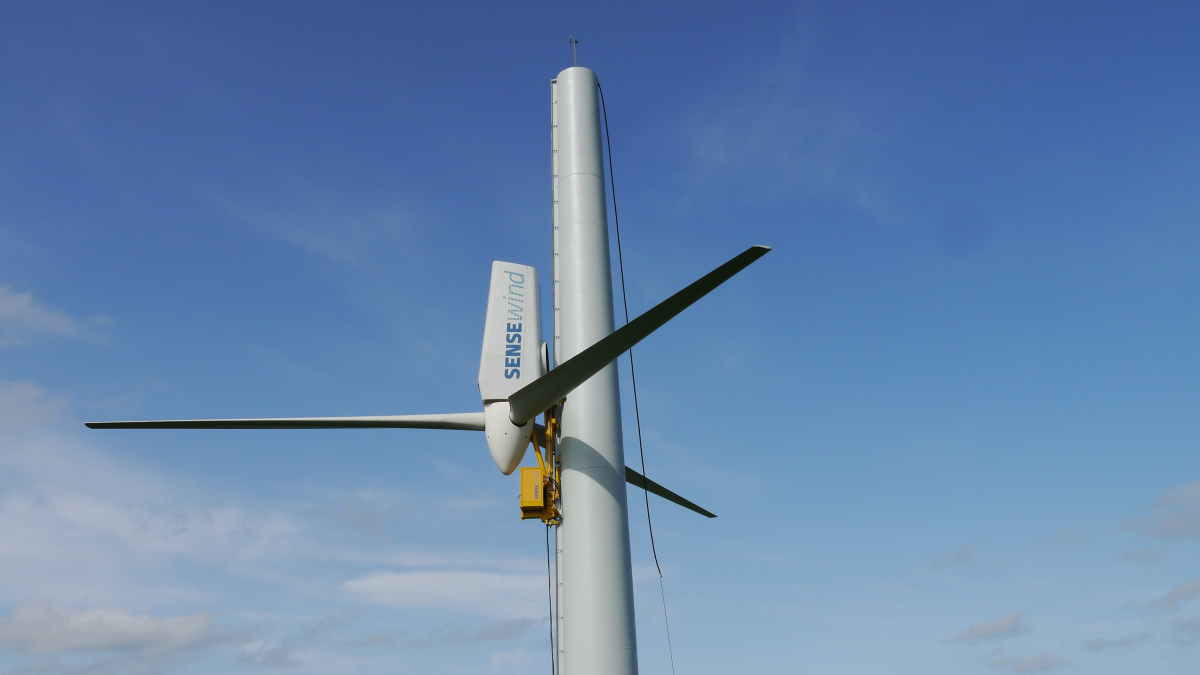Business Sectors
Events
Contents
Register to read more articles.
Electric power, terminal fire-fighting influence tug orders
Tugs are being fitted with FiFi1 fire-fighting systems and pumps driven by electric motors
As electric-powered tugs are ordered, designed and built, low-emissions power units are being ordered to drive off-ship fire-fighting system pumps. Increasing numbers of tugs are being built with external fire-fighting systems in FiFi1 or FiFi-E classes, also known as FiFi capability, to tackle blazes on vessels and infrastructure in harbours and terminals.
Some are supplied with dedicated small engines or generators, or power can come from a main diesel engine to run the pump that drives pressurised water and foam mixes to the monitors on the deck.
According to Fire Fighting Systems (FFS) sales director for marine Espen Sveberg, pumps on electric tugs are driven by power from permanent magnet (PM) motors or power take-off (PTO) units on generator sets.
“The number of electrical tugs has increased. We have delivered equipment for both Damen’s Sparky tug and Robert Allan’s ElectRA tugs.” Damen delivered its first battery powered tug, Sparky, to Ports of Auckland, New Zealand in 2022. Sanmar Shipyards is currently the only builder producing electric-powered tugs of ElectRA design.
“The FiFi pumps are driven with PM motors, or in some cases, the FiFi pumps are run from a PTO on the emergency gensets on board,” says Mr Sveberg.
“It looks like electrical tugs will continue to be a solution moving forward, hence we have received more and more inquiries for these kinds of tugs.”
The type, class and arrangement of fire-fighting systems is determined by the owner, naval architect and shipyard with increasing engagement with the product supplier.
“When designing tugs, the shipowner evaluates the use of a fire-fighting system and tug location,” Mr Sveberg explains. “We are often involved and co-operate with the owner, shipyards and designers to find the best solution for the vessel. This is a free-of-charge service our engineering and sales team provide.”
FFS has decades of experience in supplying FiFi systems, having delivered equipment for 5,711 vessels as of 1 February 2024. “2023 was another hectic year for FFS as the order list shows we increased order income by 47% between 2022 and 2023 and increased the staff with 17 employees,” says Mr Sveberg. “Most of the orders are for newbuilding tugs but we are receiving more orders for newbuilding projects and retrofits of anchor handling tugs [AHTS] and platform supply vessels.”
All the orders and deliveries for tugs and AHTS vessels have been of FiFi capability, FiFi1 or FiFi2 class, with FiFi3 only used on large, dedicated fireboats.
“60-70% of all FFS deliveries for tugs are FiFi1 as tugs are considered first-response vessels,” Mr Sveberg continues. “These vessels are equipped with water spray protection for cooling the tug’s surfaces to enable close operations during early stages of firefighting and rescue operations.”
During a larger fire, these vessels can move into the fire, pick up people from the water and start initial firefighting. “80% of the tugs with the FiFi1 notation also have foam fire-fighting capability for petroleum-based products or hydrocarbon fuels, even if this is not required by class.”
For the remaining 30-40% of FFS deliveries for tugs, the systems are smaller with the FiFi capability notation. “These systems are for smaller areas like marinas for leisure craft and smaller harbours where the fires are not that big,” says Mr Sveberg.
Typical FiFi capability systems have water flow capacity ranging from 300 m3/hr to 1,200 m3/hr and the throw length of monitors is 80-100 m, enough to extinguish smaller fires.
FFS has developed several new solutions for this segment. “We now have small, portable units for installation on deck with a compact close-coupled diesel engine and pump.”
Another trend Mr Sveberg identified is increasing interest in installing FiFi2 class systems on tugs. In the past, these have been installed for special project newbuildings to serve at gas and oil terminals where there is need for large-flow, fire-fighting capabilities.
FiFi2 systems are for long duration operations with at least 96 hours continuous fire-fighting capacity. These vessels can throw water more than 200 m at 7,200 m3/hr while staying a safe distance from the blaze and tackling the fire for days.
Turkish fire-fighting system provider Marsis has also seen demand for FiFi units for electric-powered tugs, as well as a higher demand for newbuild tugs with diesel engines.
It supplied FiFi1 systems to four newbuild tugs built in Turkey to Navtek Naval Technologies designs, including three ZeeTug 30 vessels. These were built and delivered to Gisas Shipbuilding with an overall length of 19 m and 30 tonnes of bollard pull. Marsis also supplied the first ZeeTug 45 tug, with 45 tonnes of bollard pull and an overall length of 26 m.
Jason Engineering has supplied a FiFi2 class system for a new vessel built by MetalCraft Marine Inc for Kuwait Fire Force. Monjed 2, a 25-m FireCat, has two Jason OGF 250x350 fire pumps with a combined capacity of supplying 2,400 m3/hr of water and foam mixes to a series of deck hydrants and six remotely operable fire-fighting monitor cannons, which each have an individual capacity of up to 600 m3/hr.
Two of these monitors are fitted to telescopic masts, which allow them to be raised high above the surrounding water level for enhanced firefighting. The fire pumps are directly coupled to the main engines, enabling Monjed 2 to travel up to 15 knots, while the fire-fighting system remains fully operational.
The 27th International Tug & Salvage Convention, Exhibition & Awards will be held in association with Caterpillar in Dubai, UAE, 21-23 May 2024. Use this link for more details of this industry event and the associated social and networking opportunities; and this link to book your ticket for the exhibition, social gatherings and awards night.
Related to this Story
Events
Maritime Environmental Protection Webinar Week
Cyber & Vessel Security Webinar Week
The illusion of safety: what we're getting wrong about crews, tech, and fatigue
Responsible Ship Recycling Forum 2025
© 2024 Riviera Maritime Media Ltd.














